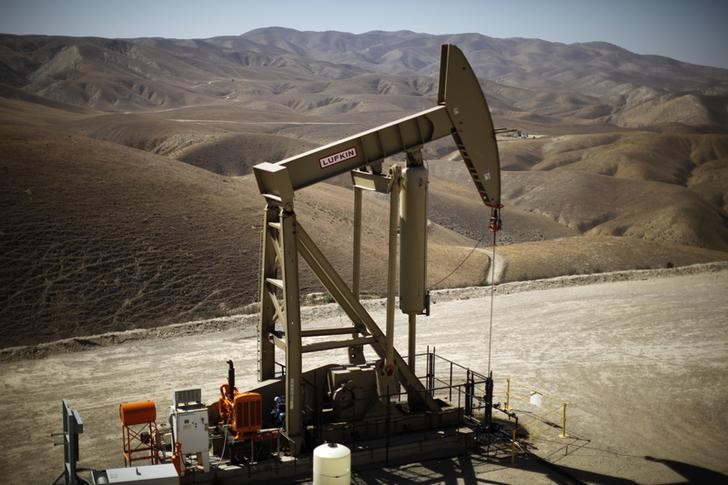* Only Saudis have spare oil capacity and it is very thin
* Constraints could signal higher oil prices
* Graphic on global spare capacity and fiscal breakeven:
* http://reut.rs/2c4D0vZ
By Dmitry Zhdannikov
LONDON, Sept 8 (Reuters) - A battle for market share between oil producers has left the world awash with stocks of unwanted crude and driven a collapse in prices over the past two years.
But a study of one often overlooked oil market parameter -- spare capacity or the ability of producers to quickly ramp up output to cushion against unexpected supply cuts elsewhere -- shows that a major bullish trend for prices could be building.
With Iran, Iraq, and Gulf nations Kuwait and the United Arab Emirates all producing at or almost at capacity, there is only a handful of states that have a significant gap between current production levels and what they can produce in theory.
The word "theory" is key here, though, as those countries include Libya, Nigeria, Venezuela and Saudi Arabia.
The chances of an end to unrest in Libya and Nigeria or of Venezuela overcoming its social and economic problems and ramping up production are so low that most analysts are writing off theoretically higher capacity levels in those countries.
That leaves Saudi Arabia, the only major traditional swing supplier, as the sole global central bank of spare capacity. But the assumption also comes with a caveat.
Having told the market for many years that they can produce 12.5 million barrels per day if needed, Saudis, including Deputy Crown Prince Mohammed Bin Salman, have said this year they can ramp up supply immediately only to 11.5 million bpd. from that figure Riyadh's current record output of 10.7 million bpd, and that leaves Saudi and effectively global spare capacity at only 0.8 million bpd -- the lowest on record and not enough to cover even one major supply outage.
"Supply constraints seem a distant prospect in the current oil market, but a return to balance in 2017 will leave the world with severely limited spare capacity," HSBC's oil industry analysts said in a note.
Others broadly share that view.
"In a market full of disruptions and uncertainties, if there was a blow up of the scale of Canada once again, we would see oil prices rise like we did pre-summer," said Abhishek Deshpande, an analyst at Natixis.
Wildfires in the Canadian region of Alberta in May cut the country's daily output by 1 million barrels and were one of the factors that pushed oil prices to a six-month high. STOCKS
So is it inevitable that when global oil demand finally rises close to or above supply in the next few months, prices will jump on fears of a lack of spare capacity?
Not necessarily.
For analyst Deshpande, countries like Nigeria still pose downside risks as their contribution to the market is unpredictable.
"Assuming all countries were producing at their optimal levels, including Libya and Nigeria, and markets were balanced, it is then I would be really worried about thin spare capacity," he said.
Meanwhile Iraq, Kuwait, the UAE and Saudi Arabia are all set to add new capacity in 2017 as they are drilling on new fields.
Separately, the world has accumulated so many stocks over the past two years -- standing at a record 3 billion barrels according to the International Energy Agency -- that they have become a substitute of sorts for spare capacity.
Before the supply glut started building in mid-2014, stocks stood at just 2.6 billion barrels. It would take many months to bring them back to that level if demand were finally to exceed supply next year.
However, some observers believe that the constraints on spare capacity mean a bigger cushion needs to be maintained.
"There is no reason stocks should return to pre-collapse levels. The lack of swing suppliers calls for more," said veteran OPEC watcher Jamie Webster.
<^^^^^^^^^^^^^^^^^^^^^^^^^^^^^^^^^^^^^^^^^^^^^^^^^^^^^^^^^^^ Graphic on global spare capacity and fiscal breakeven:
http://reut.rs/2c4D0vZ
^^^^^^^^^^^^^^^^^^^^^^^^^^^^^^^^^^^^^^^^^^^^^^^^^^^^^^^^^^^>
